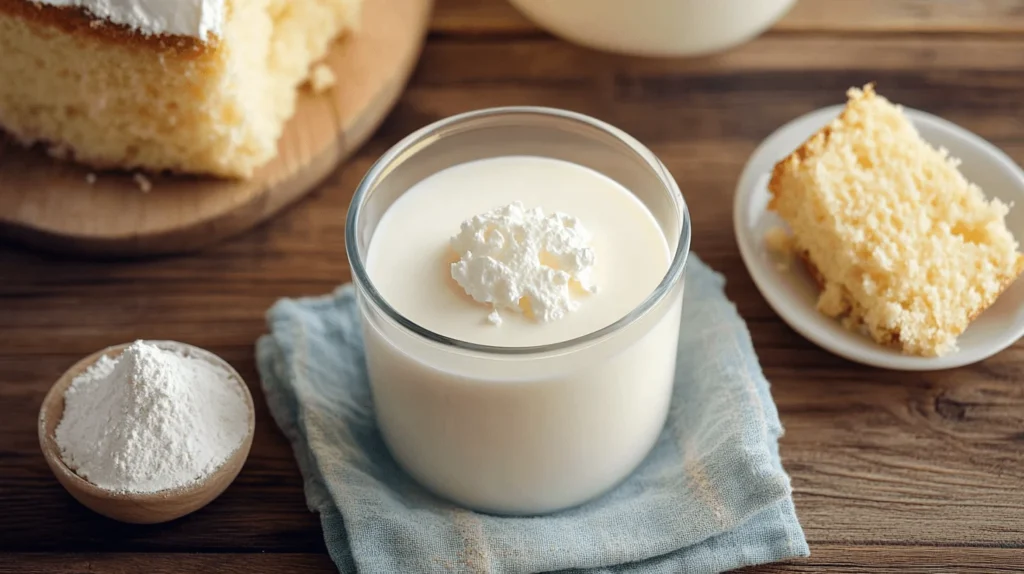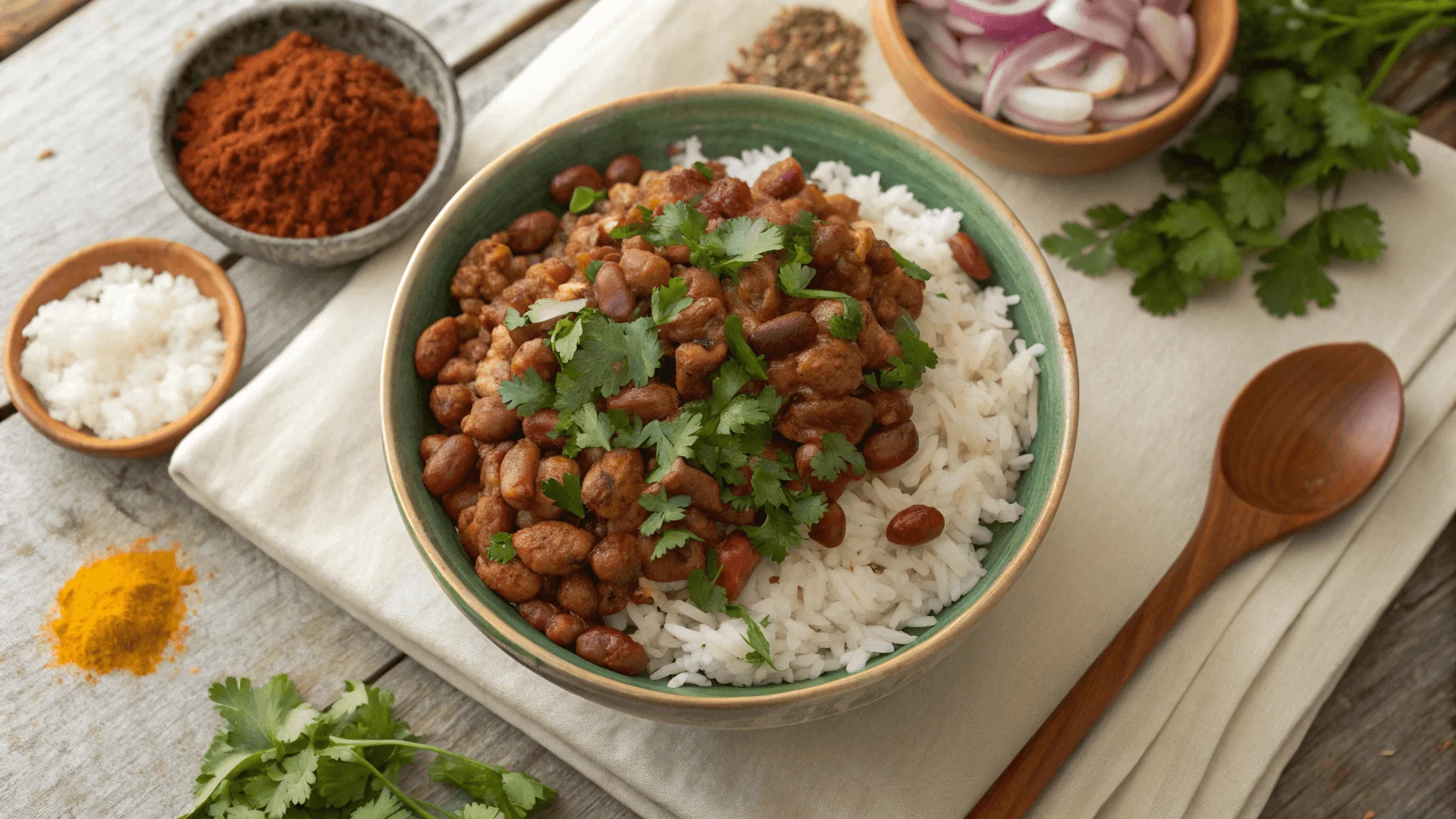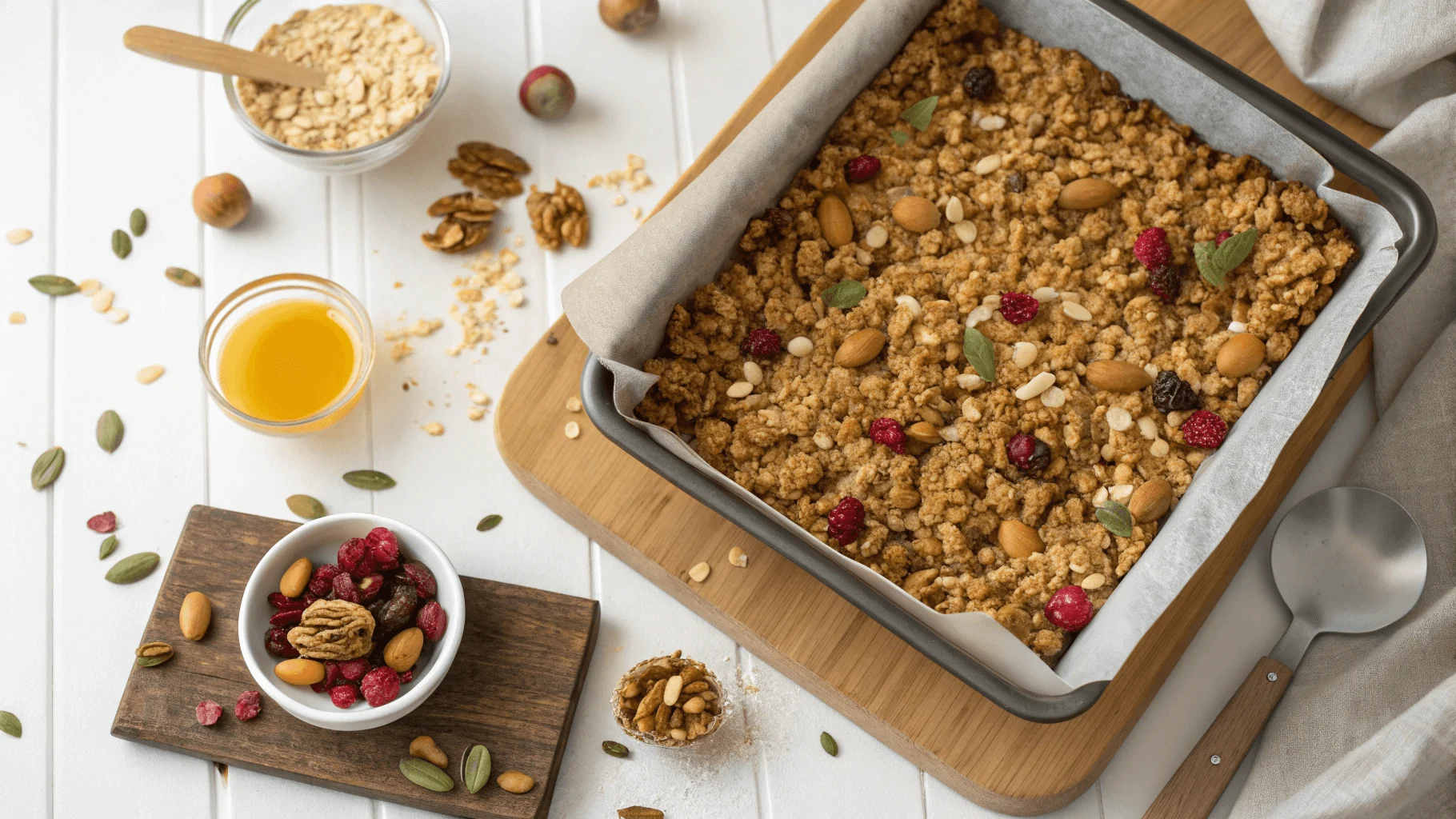Baking enthusiasts often experiment with various ingredients to create unique textures and flavors in their cakes. One such ingredient is kefir, a fermented milk product with a tangy taste, which has gained popularity as a substitute for buttermilk. This brings up an important question: Can I use kefir instead of buttermilk in cake? In this article, we will discuss kefir and buttermilk, explore their key differences, and delve into how kefir can be used as a replacement in cake recipes. We’ll also address the potential challenges and provide tips for achieving the best results when using kefir as a buttermilk alternative.
What Is Kefir?
History and Origins of Kefir
Kefir has ancient roots, originating in the Caucasus Mountains, where it was traditionally made by fermenting milk with kefir grains. These grains are a combination of bacteria and yeasts that thrive in the milk, leading to a fermentation process that produces a tangy, slightly effervescent drink. In regions like Russia and the Middle East, kefir has been consumed for centuries due to its probiotic content and health benefits. Today, kefir is widely available around the world, enjoyed as a nutritious drink or used in a variety of recipes, including cakes. So, can I use kefir instead of buttermilk in cake? The answer lies in understanding its unique properties. Explore more about baking with kefir and its unique applications in cakes.
The Nutritional Profile of Kefir
Kefir is a rich source of vitamins, minerals, and beneficial bacteria. It contains high amounts of calcium, protein, and B vitamins, which contribute to overall health. The probiotics found in kefir are known to promote gut health by improving digestion and boosting the immune system. Additionally, kefir is lower in lactose than regular milk, making it a more suitable option for those with lactose intolerance. If you’re looking for a healthier alternative to buttermilk, kefir is a viable choice, adding both flavor and nutritional value to your cake.
Flavor and Texture of Kefir
Kefir has a tangy, slightly sour flavor due to its fermentation process. Its texture is similar to that of drinkable yogurt, being thick and creamy yet pourable. This texture helps to add moisture to cakes, creating a tender crumb. The slightly effervescent nature of kefir also contributes to a light, airy texture, making it a great choice for cakes that need to rise. If you wonder, Can I use kefir instead of buttermilk in cake? its distinctive flavor and texture can offer a different twist while still maintaining the desired moistness and softness.
What Is Buttermilk?
The Origins and Traditional Uses of Buttermilk
Buttermilk, historically a byproduct of churning cream into butter, has been a staple in baking for generations. Its origin traces back to the traditional method of butter-making, where the liquid remaining after churning the butter is known as buttermilk. This liquid was often used in recipes for cakes, pancakes, and biscuits because of its tangy flavor and acidity. Buttermilk helps tenderize baked goods, making them moist and soft. When considering the question, Can I use kefir instead of buttermilk in cake? it is crucial to understand the similar properties both ingredients share. Discover tips for mastering baking textures with alternative ingredients.
Nutritional Composition of Buttermilk
Buttermilk is lower in fat compared to regular milk, as the fat content is mostly removed during butter production. It is also rich in calcium, vitamin B12, and riboflavin, which contribute to healthy bones and energy production. Buttermilk contains lactic acid, which not only gives it a tangy flavor but also interacts with baking soda or baking powder to create leavening, helping baked goods rise. The acidity in buttermilk also aids in breaking down gluten, ensuring a softer texture in cakes. Despite its benefits, can I use kefir instead of buttermilk in cake remains a valid consideration due to the similar properties of both.
Flavor and Texture of Buttermilk
Buttermilk has a smooth, slightly thick consistency, with a mild tanginess. It adds a subtle richness to cakes and other baked goods without overpowering the flavors. The acidity in buttermilk helps to balance out sweetness and makes it an ideal ingredient for moist, tender cakes. Buttermilk’s texture helps retain moisture in the cake, resulting in a delicate crumb. While kefir offers a similar tangy flavor, its effervescence and thicker consistency may slightly alter the texture of the cake when used as a substitute.
Key Differences Between Kefir and Buttermilk
Fermentation Process: How They Are Made
Both kefir and buttermilk are fermented dairy products, but their fermentation processes differ. Buttermilk is produced through the bacterial fermentation of low-fat milk, often from the buttermilk left after butter has been churned. Kefir, on the other hand, is made by fermenting milk with kefir grains, which contain a combination of bacteria and yeasts. This results in kefir having a more complex microbial profile and a slightly carbonated, tangy flavor. The question can I use kefir instead of buttermilk in cake? hinges on these differences, as they contribute to slightly distinct flavors and textures in baked goods.
Taste Differences: Tanginess and Texture
While both kefir and buttermilk are tangy, kefir has a more pronounced sourness due to its diverse range of bacteria and yeast strains. Buttermilk’s tanginess is milder, which makes it a popular choice for most cake recipes. Kefir’s effervescence gives it a lighter, more airy texture, whereas buttermilk is thicker and creamier. When substituting kefir for buttermilk in cake, can I use kefir instead of buttermilk in cake without altering the flavor and texture significantly? It may slightly shift the cake’s overall taste, making it a bit more tangy and lighter. Understand the science behind how these differences affect your cake.
Probiotic Content and Health Benefits
One of the major differences between kefir and buttermilk is the probiotic content. Kefir contains a wider variety of beneficial bacteria and yeasts, which are known to improve gut health and support the immune system. Buttermilk, while beneficial due to its lactic acid bacteria, contains fewer probiotics than kefir. If you’re looking to add more probiotics to your cake, substituting kefir for buttermilk is an excellent way to enhance the health benefits of your dessert. Therefore, can I use kefir instead of buttermilk in cake for a healthier, more probiotic-rich alternative? The answer is yes.
Can Kefir Replace Buttermilk in Cake?
Compatibility of Kefir with Cake Recipes
Kefir can successfully replace buttermilk in many cake recipes. The acid in kefir reacts with baking soda or baking powder, helping the cake rise and achieve a light, fluffy texture. Additionally, the tanginess of kefir can complement sweet flavors in cakes, much like buttermilk does. If you’re wondering, can I use kefir instead of buttermilk in cake? the answer is that kefir works well in cake batters that require acidity to activate the leavening agents. It’s especially great in cakes like pound cakes, biscuits, or any recipe that calls for buttermilk.
How Kefir Affects Cake Texture and Moisture
Kefir’s texture is similar to that of buttermilk, contributing moisture to the cake. However, kefir is slightly thicker and may result in a denser texture, especially when used in large quantities. The effervescence in kefir can also make cakes rise more, resulting in a light and airy crumb. The question can I use kefir instead of buttermilk in cake may arise when you are concerned about the cake’s moisture level. If you want a lighter, fluffier cake, kefir might just be the perfect substitution.
The Impact on Taste: How Kefir Alters the Flavor Profile
Kefir imparts a more intense tangy flavor to cakes compared to buttermilk. This can be beneficial in cakes where you want a stronger sourness, such as lemon or spice cakes. However, if you’re making a sweet cake, kefir might add an unexpected tartness. When considering whether you can use kefir instead of buttermilk in cake, it’s important to remember that kefir’s stronger flavor can alter the final taste. To balance the flavors, you may need to adjust your recipe accordingly. This adjustment ensures that kefir complements the other ingredients without overpowering the cake’s overall flavor.
When to Use Kefir Instead of Buttermilk in Cake
When You Have No Buttermilk on Hand
One of the most common reasons to use kefir instead of buttermilk in cake is when you run out of buttermilk. Kefir is a great alternative because it is a pantry staple that many people already have on hand. Simply replace the buttermilk in your recipe with an equal amount of kefir and continue baking. Since kefir and buttermilk are both acidic, they will provide the same leavening action in the recipe, ensuring that your cake rises beautifully.
For a Healthier Alternative: The Benefits of Kefir
Kefir offers numerous health benefits compared to buttermilk. It is richer in probiotics, which are beneficial for digestive health, and it is lower in lactose. If you’re looking for a healthier alternative to buttermilk, kefir can be an excellent choice. It provides the same texture and moisture while boosting the nutritional profile of your cake. If health benefits are important to you, using kefir in place of buttermilk is a smart decision.
When You Want to Add Probiotics to Your Cake
Probiotics are essential for maintaining a healthy gut microbiome, and kefir is an excellent source of these beneficial microorganisms. If you want to add a probiotic boost to your cake, kefir is a great substitute for buttermilk. It will not only enhance the flavor and texture of your cake but also provide additional health benefits. If you’re asking can I use kefir instead of buttermilk in cake for a more health-conscious option, kefir is a great solution.
Potential Challenges and Solutions
Adjusting the Consistency of Kefir
Kefir is thicker than buttermilk, which can affect the consistency of your cake batter. If your recipe requires a thinner batter, you may need to thin out the kefir with a small amount of milk or water. This will help ensure the proper texture and consistency in your cake. When using kefir instead of buttermilk, be prepared to make slight adjustments to the liquid content to achieve the desired batter thickness.
Managing the Acidity Difference
Kefir is slightly more acidic than buttermilk, which could impact the leavening in your cake. To counteract this, you may need to adjust the amount of baking soda or baking powder in your recipe. Reduce the amount of leavening agent to ensure your cake doesn’t rise too quickly and become overly dense. Understanding the acidity difference between kefir and buttermilk is key to ensuring a successful substitution.
How to Adjust Recipes for Best Results
When substituting kefir for buttermilk, it’s important to test the recipe and adjust the liquid and leavening agents as needed. Start by replacing buttermilk with kefir in equal proportions, and then tweak the ingredients based on the results. It may take a few tries to get the texture and flavor just right, but with some experimentation, you’ll find the ideal balance for your cakes.
How to Substitute Kefir for Buttermilk in Cake Recipes
The Right Ratio: How Much Kefir to Use
When replacing buttermilk with kefir, use a 1:1 ratio in most recipes. However, if the kefir is very thick, you may need to thin it slightly with milk or water to match the consistency of buttermilk. This ensures the right texture in your cake batter.
Common Recipe Modifications When Using Kefir
While kefir works well as a buttermilk substitute, you may need to adjust other ingredients. If your cake recipe calls for baking soda, you might need to reduce the amount to account for kefir’s higher acidity. Additionally, experiment with other flavors and spices to balance the tanginess of kefir in your cake.
Testing and Tweaking: How to Know If the Substitution Works
To test whether kefir works as a buttermilk replacement, bake a small batch of your cake using kefir and evaluate the texture, flavor, and moisture. If necessary, tweak the recipe by adjusting the leavening agents or adding more sweetness to balance the tanginess. A little trial and error will help you perfect your cake with kefir.
Baking Tips for Using Kefir in Cakes
Balancing Ingredients When Using Kefir
When using kefir in your cake recipe, make sure to balance the wet and dry ingredients. Kefir is a liquid ingredient, so adjust the amount of flour or dry ingredients to ensure the cake batter has the right consistency.
The Best Cake Types for Kefir Substitution
Kefir works well in moist cakes like pound cakes, sponge cakes, and fruit cakes. It is also a great substitute for buttermilk in cakes that benefit from a tangy flavor, such as lemon or spice cakes. These cakes can take advantage of kefir’s tanginess while maintaining a moist texture.
Tips for Achieving the Best Texture and Taste
To achieve the best texture and taste, use fresh kefir and ensure it is at room temperature before adding it to the cake batter. This helps prevent any drastic changes in the texture or rise of your cake. Adjust the sweetness and flavors of the cake to balance kefir’s tangy profile.
Popular Cake Recipes Using Kefir
Kefir-Based Pound Cake Recipe
A rich, moist pound cake made with kefir can be a delightful twist on the classic recipe. The kefir adds moisture and a slight tang, making the cake incredibly tender and flavorful.
Kefir and Lemon Cake
This citrusy cake is perfect for kefir substitution. The tanginess of kefir complements the lemon, creating a refreshing and flavorful dessert that is both light and moist.
Kefir Chocolate Cake
Kefir can also be used in chocolate cakes, where its tanginess contrasts with the richness of the chocolate. It helps keep the cake moist and adds a depth of flavor that complements the cocoa.
What Experts Say About Using Kefir in Cakes
Baking Experts’ Views on Kefir vs. Buttermilk
Baking experts agree that kefir is a viable substitute for buttermilk, especially when you’re looking for a healthier, probiotic-rich option. It can provide a unique texture and flavor, although some adjustments may be necessary for optimal results.
Scientific Insights on Kefir’s Baking Properties
Scientific studies suggest that kefir’s high probiotic content and acidity make it an excellent choice for baking. It reacts with leavening agents to create a light and airy texture, much like buttermilk, but with added health benefits.
FAQs
What is the best ratio of kefir to buttermilk in cake recipes?
The best ratio is 1:1. However, if your kefir is thicker than buttermilk, you may need to thin it with a little milk or water.
Can I use kefir in all cake recipes instead of buttermilk?
Yes, kefir can be used in most cake recipes that call for buttermilk, though slight adjustments may be needed for consistency and flavor.
Does kefir affect the flavor of chocolate cakes?
Yes, kefir can slightly alter the flavor of chocolate cakes, but the tanginess complements the richness of chocolate, creating a balanced taste.
Is kefir healthier than buttermilk in baking?
Kefir is generally considered healthier due to its higher probiotic content, which supports gut health and digestion.
Can I use flavored kefir for baking cakes?
Flavored kefir can be used in cakes, but it may alter the flavor profile. It’s best to use plain kefir for a more neutral taste.
What are the advantages of using kefir over buttermilk in baking?
Kefir offers more probiotics, a unique flavor, and additional health benefits, making it a great choice for those seeking a healthier, tangy alternative to buttermilk.
Conclusion
In conclusion, kefir can indeed replace buttermilk in cake recipes, offering a unique twist in flavor and texture. While kefir and buttermilk share some similarities, their differences, such as fermentation methods and probiotic content, can influence the final result. By understanding how kefir works in baking, adjusting recipes as needed, and experimenting with different cakes, you can enjoy the benefits of this probiotic-rich substitute. So, next time you’re out of buttermilk, don’t hesitate to ask, can I use kefir instead of buttermilk in cake? The answer is a resounding yes.






4 thoughts on “The Truth About Using Kefir Instead Of Buttermilk In Cake”